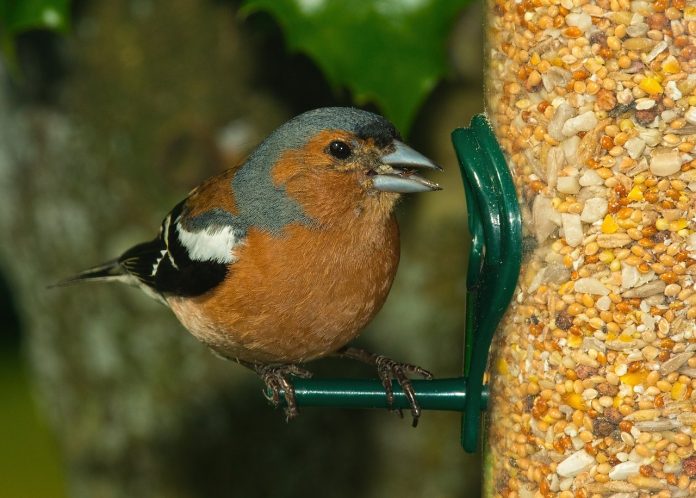I’m often asked, “Is feeding birds really necessary?” The simple answer is no.
We feed birds because we enjoy seeing them in our backyards. But while we’re at it, why not make our efforts a bit more worthwhile by participating in Project FeederWatch, Cornell University’s citizen science program sponsored by the Lab of Ornithology.
New volunteers are always welcome. And no experience is required. FeederWatch materials teach everything participants need to know.
Even counts of just a few common birds such as cardinals and chickadees are useful. And volunteers don’t even need to identify every species they see. Assuming you have suitable habitat with some woody cover, you can expect 12 to 20 species over the course of the winter.
Species noted
Based on data submitted from FeederWatchers from the northeast region, which extends north and east from Kentucky, last year the most frequently seen species were Carolina and black-capped chickadees.
Rounding out the top ten species recorded in the northeast were dark-eyed juncos, downy woodpeckers, mourning doves, cardinals, blue jays, white-breasted nuthatches, goldfinches, house finches, and red-bellied woodpeckers.
Some interesting long-term population trends have emerged in recent years. For example, red-breasted nuthatches appeared at 45 percent of feeders compared to 23 percent the previous year. And hairy woodpeckers have increased slowly and steadily across their range.
National data
With more than 30 years of data from all across the country, FeederWatch has more information than any single ornithologist could ever collect. This data provides insights into population changes and the effects of climate change on bird distribution.
It’s citizen science at its best. One of the benefits of FeederWatch is that the army of skilled birders grows every year. Over FeederWatch’s 30-year history, more than 69,000 volunteers have counted more than 142 million birds and submitted more than 2.5 million checklists.
Collecting the data is fun, and can be done with children and grandchildren, so I doubt the program will ever want for volunteers. And it’s a great way to introduce children to real science. FeederWatch does not require a huge time commitment, and anyone can do it.
Identifying birds
This year, FeederWatch begins on Nov. 11 and continues through April 13, 2018. Whether you count once a month, once a week, or every day, and even if you can identify only one or two species of birds, your results are valuable.
Launched in 1987, Project FeederWatch compiles information gathered by volunteers from all across North America. Last year 148,196 checklists were submitted by 21,270 volunteers.
They reported a total of 6,882,867 birds.
To become a FeederWatch volunteer, visit www.feederwatch.org, call 800-843 2473 during normal business hours, or send a check to Project FeederWatch, P.O. Box 11, Ithaca, NY 14851-0011.
The $18 fee ($15 for Lab of Ornithology members) covers all materials, data analysis, and publication of each year’s results.
If for some reason you cannot set up bird feeders, click on the “FeederWatch Cam” link to watch a live video feed from a feeding station in northern Ontario. It features a variety of northern species, including gray jays, grosbeaks, and finches that are unlikely to be seen in the lower 48.
Feeding time
As I wrote this, I watched a ruffed grouse spook a flock of evening grosbeaks off a platform feeder.
With colder temperatures just around the corner, it’s time to prepare suet cakes for chickadees, nuthatches, and woodpeckers.
My favorite peanut butter suet recipe, back by popular demand, comes from Alabama birder Martha Sargent.
Ingredients: One cup crunchy peanut butter, one cup lard (no substitutes here), two cups “quick cook” oats, two cups cornmeal, one cup white flour, and one-third cup sugar.
Optional ingredients include raisins, sunflower kernels, and/or shelled peanuts.
Melt lard and peanut butter in microwave or over low heat, then stir in remaining ingredients. Pour into square freezer containers about 1 inch thick. Chill in freezer for 30 minutes, then cut to size, separate blocks with wax paper, and store in freezer.













